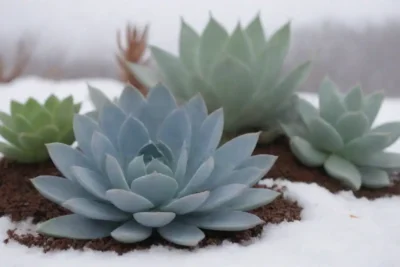
Crafting a Soil Mix That Supports Both Succulents and Cacti
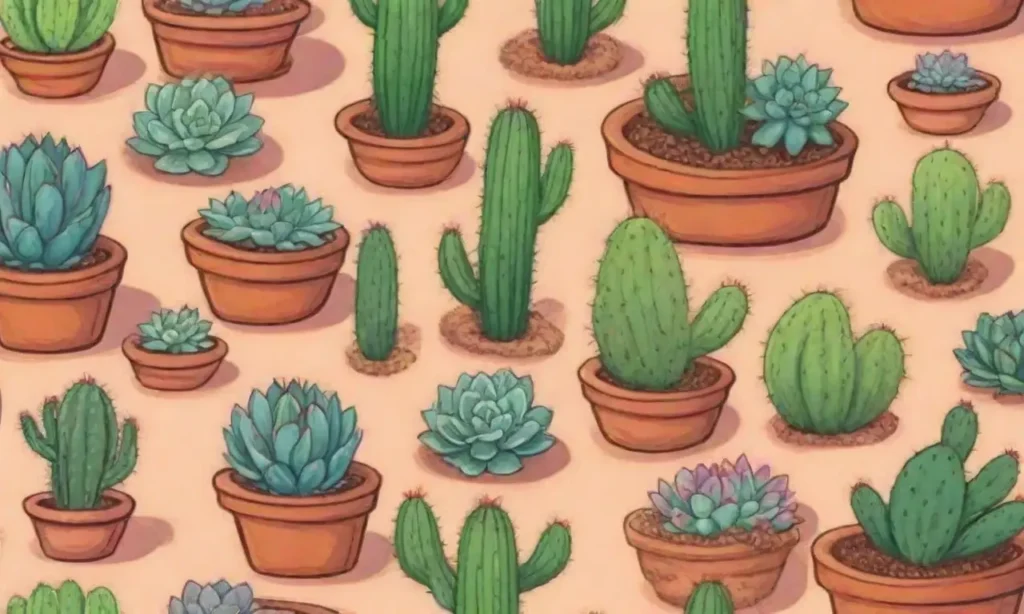
Introduction
When it comes to houseplants, few types capture the imagination quite like succulents and cacti. These resilient plants, known for their stunning diversity and low maintenance requirements, thrive in various environments and add a unique touch to any space. However, successful cultivation of these plants requires a keen understanding of their specific soil preferences, which often differ from more conventional potting mixes. Indeed, crafting the perfect soil mix is pivotal not only for their growth but also for ensuring a thriving, healthy ecosystem for your leafy companions.
This article delves deeply into the art of creating an ideal soil mix that supports both succulents and cacti. We will explore the individual requirements of these plants, the essential components of a well-balanced mix, the preparation technique, and ongoing care. By the end of this guide, you will have the knowledge necessary to create a soil blend that fosters growth, ensures drainage, and delights in aesthetics.
Understanding Succulents and Cacti Requirements
The Unique Needs of Succulents
Succulents are perhaps best known for their ability to store water in their leaves, stems, or roots, which is essential for thriving in arid climates. This water retention capability allows them to withstand long periods of drought. However, an abundant water supply in a dense, poorly draining soil mix can lead to root rot, a common affliction caused by over-saturation.
Consequently, obtaining a soil mix that maintains proper moisture levels is invaluable when managing succulents. Ideal soil should drain rapidly, quickly moving excess water away from the root zone while still retaining some moisture for absorption by the plant. Succulents generally thrive in soil with a slightly acidic to neutral pH, making components like peat moss or coconut coir valuable in your mix, as they offer both drainage and moisture retention.
The Special Characteristics of Cacti
Cacti, while similar to succulents in their water retention strategies, often have even stricter requirements concerning drainage. Many species originate from deserts where heavy rains are rare, and they have adapted to endure extreme variability in their environment. As such, the soil for cacti must replicate their natural habitat closely.
Cacti prefer a sandy, gritty mix that mirrors their native soil conditions. Their roots require plenty of air circulation, making soil that clumps together undesirable. Like succulents, excessive moisture around the root zone can give rise to root rot, but cacti are even more sensitive to overwatering. This necessitates a soil mix that not only drains quickly but also provides adequate space for air exchange around the roots.
The Similarities and Differences
Both succulents and cacti share the trait of needing a well-draining soil mix; however, cacti can be more finicky when it comes to moisture retention. Therefore, when crafting a soil blend meant for both plants, it is paramount to prioritize components that foster drain ability while facilitating the right amount of moisture retention to meet both plants' needs. Understanding these similarities and differences is critical to orchestrating a successful soil mix that supports growth and blooms across both types of plants.
 Finding the Ideal Soil Type for Outdoor Succulent Gardens
Finding the Ideal Soil Type for Outdoor Succulent GardensEssential Components of a Balanced Mix
Selecting the Right Ingredients
Crafting your own soil mix allows you to customize it according to the specific needs of both succulents and cacti. The primary ingredients are generally broken down into three categories: organic materials, inorganic materials, and amendment materials.
Organic Materials: These include peat moss, coconut coir, and compost. While peat moss and coconut coir possess moisture retention properties that benefit succulents, they also offer some essential nutrients. However, too much organic material can lead to soil compaction and poor drainage, so it's crucial to use them in moderation.
Inorganic Materials: These comprise materials like perlite, pumice, and granite grit. These components enhance drainage and aeration in the mix. Perlite is particularly effective due to its lightweight nature and the ability to create air pockets in the soil. Pumice, being porous, aids in moisture retention as well, making it a great option for both succulents and cacti.
Amendment Materials: The final category includes ingredients aimed at fine-tuning your soil mix. For example, you might consider adding hydroton or expanded clay pellets for further enhancement of aeration and drainage. Also, dolomite lime can be used to adjust soil pH levels, particularly beneficial if you find your soil leaning towards the acidic side.
Mixing Ratios for the Perfect Blend
To create an ideal soil mix for both succulents and cacti, understanding the right ratios of these components is critical. A commonly recommended ratio is:
50% Inorganic Materials: This could consist of 25% perlite and 25% pumice/granite grit. This ensures substantial drainage and aeration, allowing roots to breathe and reducing the risk of root rot.
30% Organic Materials: Use 15% peat moss or coconut coir to balance moisture retention with drainage. This addition offers some nutrients and can support healthy growth while preventing the mix from drying out completely.
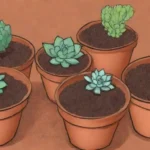 Common Mistakes to Avoid When Selecting Soil for Succulents
Common Mistakes to Avoid When Selecting Soil for Succulents20% Amendment Materials: A combination of 5% hydroton or expanded clay pellets along with 5% dolomite lime will ensure excellent drainage dynamics while maintaining a pH conducive to both types of plants.
Customizing Your Mix
While the above ratios serve as a foundation, remember that every grower’s environment may present unique challenges. Factors like humidity, temperature, and personal care routines will influence how quickly soil dries out or retains moisture. If you find that your mix dries out too quickly, you might consider adding a touch more organic material. Conversely, if you struggle with moisture retention around roots, you can enhance the inorganic portion to improve drainage.
Experimentation is key, and do not hesitate to adjust based on your experiences. Document your observations in a gardening journal to keep track of what works best for your specific plants and growing conditions.
Preparation of Your Soil Mix
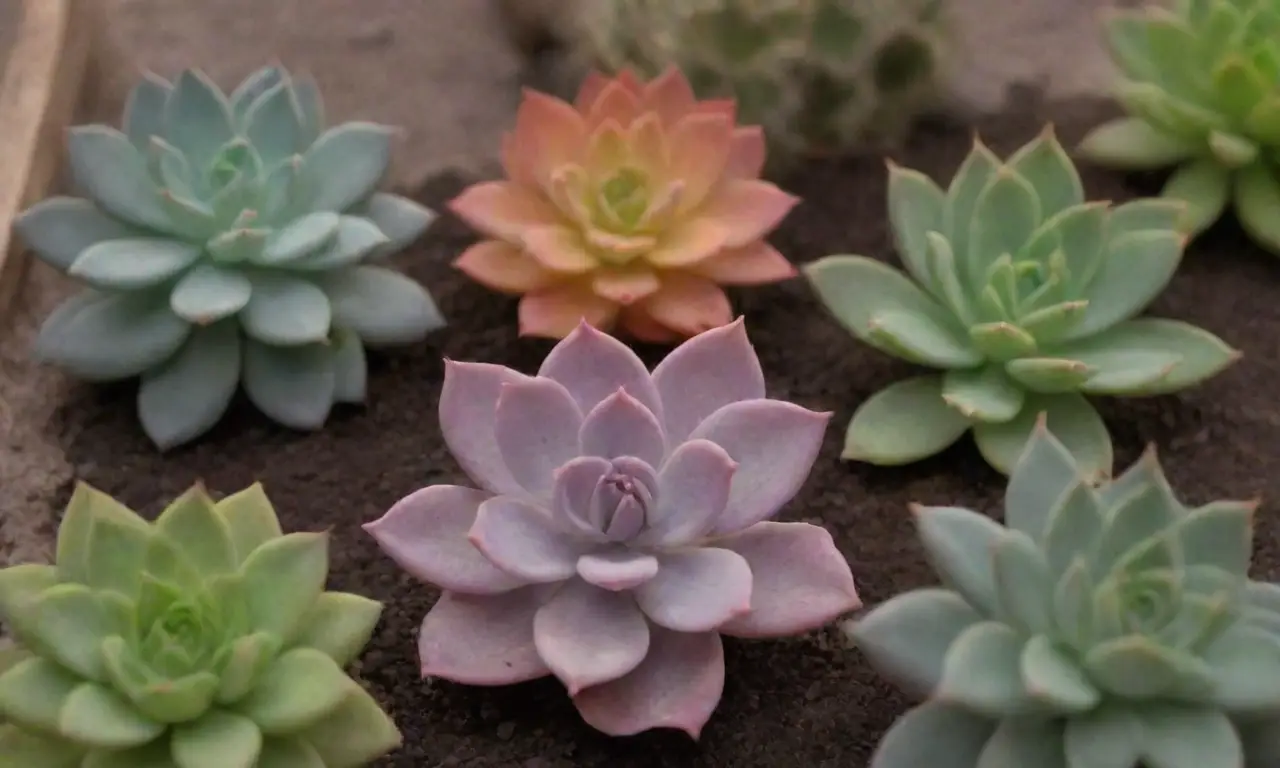
Step-by-Step Mixing
Preparing a soil mix tailored for succulents and cacti can be a gratifying experience. Here’s how you can craft it step by step:
Gather Your Materials: Assemble all the ingredients mentioned earlier, including a mixing container, which could be a large bucket or wheelbarrow. Make sure to have a trowel or shovel handy.
Combine Inorganic Materials: Start by adding your 50% inorganic materials to the mixing container. Thoroughly mix the perlite and pumice/granite grit to create a uniform texture.
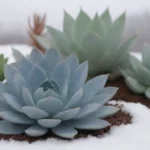 Winter Care for Succulents: Adapting Soil Types for Cold Months
Winter Care for Succulents: Adapting Soil Types for Cold MonthsAdd Organic Materials: Next, integrate your 30% organic materials into the mixture, ensuring that the peat moss or coconut coir is evenly distributed throughout the mix.
Incorporate Amendment Materials: Finally, add the 20% amendment materials for enhanced drainage and pH adjustment. Stir thoroughly to ensure all components intermix well without clumping.
Check Consistency: After adequately integrating the ingredients, observe how the mix holds its shape when squeezed. It should clump together but crumble easily, demonstrating that it is neither too dry nor too wet.
Storing Your Soil Mix
Once you’ve prepared your ideal soil mix, consider how to store it. An airtight plastic container or a large zipper storage bag will work well, particularly if you don't plan to use it all right away. Keep the mix in a shady, cool area to prevent it from drying out or degrading. Label the containers with the date and contents for easy identification later.
Testing Your Mix
Before potting your beloved plants, it’s wise to conduct a simple test of your soil mix. A standard way is to plant a few seeds or propagate a cutting in the mix and monitor its development over time. This will help you determine the mix's effectiveness in supporting healthy growth while allowing for adjustments before working with larger quantities or existing plants.
Ongoing Care for Your Plants in the Mixed Soil
Watering Guidelines
Once your succulents and cacti are potted in their new soil mix, a crucial aspect of care is watering. For both plant types, it is essential to adhere to a “soak and dry” approach. Allow the soil to dry out completely between watering sessions; this encourages strong root growth and prevents excess moisture.
The frequency of watering can vary based on environmental conditions, but a general rule of thumb is to water every 1-2 weeks. During the growing season (spring to summer), plants will require more frequent watering as they engage in photosynthesis and growth. In the fall and winter months, when many of these plants enter dormancy, cut back on water significantly.
 Testing Soil Drainage: Ensuring Your Succulents Thrive
Testing Soil Drainage: Ensuring Your Succulents ThriveFertilizing for Optimal Growth
Feeding plants potted in your specially crafted mix can further support their health. Use a diluted liquid fertilizer formulated for succulents and cacti, typically lower in nitrogen, which can encourage excessive foliage growth at the expense of blooms. Apply fertilizer during the growing season every 4-6 weeks, while withholding fertilizer in the dormant months.
Monitoring Plant Health
Regularly observe your plants for signs of distress, such as overwatering (yellowing leaves) or underwatering (shrivelled leaves). Getting familiar with the appearance and growth patterns of both plant types will help you identify issues early. Be prepared to adjust watering strategies or soil conditions if you notice any red flags.
Conclusion
Crafting a soil mix that successfully supports both succulents and cacti can feel daunting at first, but with the right knowledge and understanding, it becomes a fulfilling and rewarding endeavor. These plants, while resilient, rely on a well-considered soil composition to thrive, and your attention to their unique requirements will undoubtedly yield beautiful results.
By carefully selecting your soil's components, blending them aptly, and monitoring ongoing care, you will create a harmonious environment conducive to robust growth. Remember that experimentation is part of the gardening experience; each season presents new opportunities to enhance your craftsmanship.
In the end, your efforts and attention to detail will lead to vibrant, flourishing plants that not only bring joy to your space but also embody the beauty of nature's resilience. Happy planting!
If you want to read more articles similar to Crafting a Soil Mix That Supports Both Succulents and Cacti, you can visit the Ideal soil types category.

You Must Read